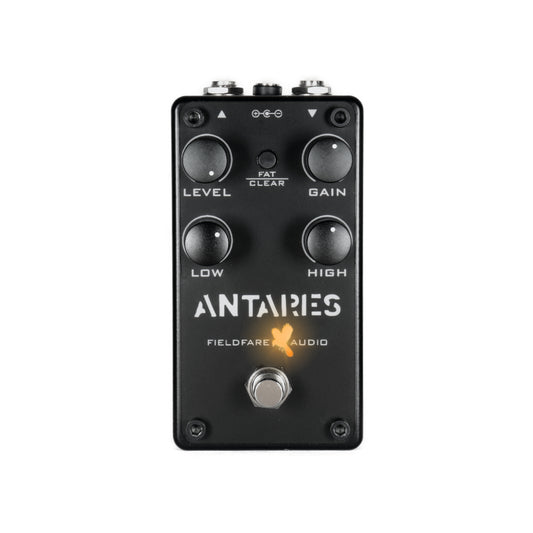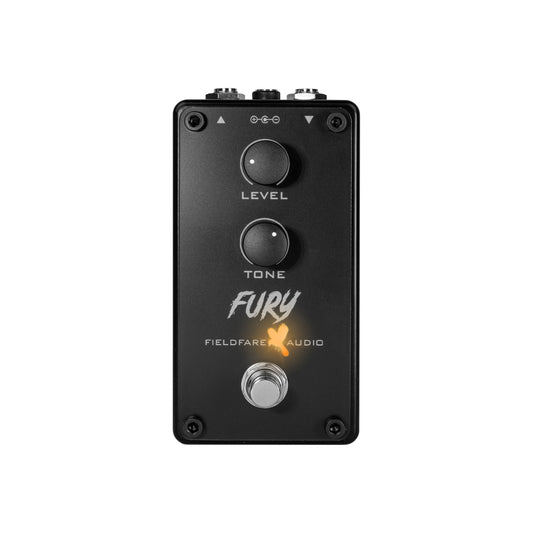
Guitar effect pedals explained – the best tips for beginners
Share
Effect pedals for beginners – which ones really make sense
Getting started with guitar effects pedals is exciting – but can also be overwhelming. Overdrive, delay, reverb, distortion, chorus, wah – countless terms, even more pedals. But don't worry: you don't have to build a complete pedalboard right away. In this article, you'll learn which effects pedals are truly useful for beginners , how to combine them, and what to look for when buying them.
Why effect pedals are important
A good effects pedal is more than just a toy – it's a tool for shaping your sound. Through various guitar effects , you learn how dynamics, frequencies, and spatial relationships interact. Especially for beginners, pedals are a great way to discover their own style and improve their playing feel.
Which effects pedals do beginners need?
When you start using effects pedals, you should focus on a few basic types. These will help you understand your sound without overwhelming you:
1. Overdrive or distortion pedal
The overdrive pedal is one of the most important guitar effects. It provides warm, dynamic distortion – perfect for blues, rock, and pop. For those who prefer something heavier, a distortion pedal offers more gain and compression.
Beginners benefit from clearly responsive pedals like the Antares Overdrive or the Revolt Overdrive Screamer – both handmade, robust and intuitive to use.
2. Tuner Pedal
An often underestimated but indispensable pedal: the tuner . It ensures that you're always in tune – the foundation of a good sound. Many tuner pedals also have a mute function, so you can tune silently.
3. Delay and Reverb
These two effects add space, depth, and atmosphere to your sound.
- Delay: rhythmically repeats your signal – ideal for solos or rhythmic riffs.
- Reverb: simulates spaces and reverb – from small clubs to cathedrals.
For beginners, simple digital pedals with few controls are sufficient – they are easy to use and deliver great results.
4. Multi-effects pedal or individual pedals?
A multi-effects pedal offers many sounds in a small space – perfect for exploring different effects. However, if you want more control over your sound in the long run, individual pedals are a better choice. This way, you'll learn step by step how signal chains and pedalboard setups work.
Pedalboard setup for beginners
The order of your pedals greatly affects the sound. A simple effects pedal order for beginners looks like this:
- Tuner (always first)
- Overdrive or distortion pedal
- Delay
- Reverb
This setup gives you a clear, structured sound that you can gradually expand. Important: Make sure you use high-quality patch cables and a stable power supply – both reduce noise and ensure reliability.
Buying effect pedals – what beginners should look out for
When buying your first effects pedal, there are a few but important points to consider:
- Easy to use: Fewer controls are preferable, but clear functions.
- Solid construction: A good pedal lasts for many years.
- Sound quality: Pay attention to dynamics, low noise, and musicality.
- Compatibility: Pedals should be compatible with your guitar and amp.
Handcrafted boutique pedals like the Antares Overdrive or the Antiheld Bass Distortion demonstrate that quality and ease of use can go perfectly together – ideal for beginners who want good tone from the start.
Conclusion – Effect pedals for beginners
Start with a solid foundation: A good overdrive pedal , a tuner , and some delay or reverb are all you need to shape your sound. With each additional effect, you'll gain a better understanding of how tone, space, and dynamics interact. And the best part: A high-quality pedal will often last you for many years – whether you're playing in your living room or on stage.







